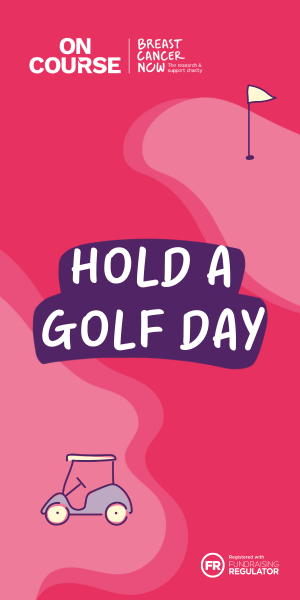The USGA and R&A are proposing a local rule that will affect the golf balls in play by top male golfers
The R&A and USGA have proposed a Model Local Rule (MLR) that gives competition organisers the option to require use of golf balls that are tested under modified launch conditions to address the impacts of hitting distance in golf.
The MLR is intended for use only in elite competitions and, if adopted, will have no impact on recreational golf.
The proposal notice, which can be found here, was sent to golf equipment manufacturers yesterday, following the Equipment Rulemaking Procedures established by the governing bodies in 2011. Manufacturers and golf stakeholders can provide feedback until 14 August 2023. If adopted, the proposal would take effect in January 2026.
Golf balls that conform to the MLR must not exceed the current Overall Distance Standard (ODS) limit of 317 yards (plus three yards tolerance) at modified Actual Launch Conditions (ALC) with a clubhead speed of 127 mph and based on a calibration set-up for 11 degrees and 37 revolutions per second (2220 rpm) as part of this proposal.
All other balls, including those typically used by recreational golfers with lower swing speeds, would continue to be tested using the existing ALC values (120 mph, and a calibration set-up of 10 degrees and 42 revolutions per second – 2520 rpm). The current ODS limit of 317 yards will remain unchanged and would be applied to both testing set-ups.
Distance has increased on average around one yard a year
The Overall Distance Standard was established in 1976 as a ball test intended to reflect maximum potential hitting distance by the longest hitters currently playing the game.
There is a direct correlation between clubhead speed and hitting distance (further research having been published in the Distance Insights reports). Over the last 20 years hitting distance has increased on average by around one yard per year.
The modified testing set-up in the proposed MLR is expected to reduce hitting distance by 14-15 yards on average for the longest hitters with the highest clubhead speeds.
Martin Slumbers, CEO of The R&A, said:
"We have worked closely with the golf industry throughout this process and taken time to listen carefully to their perspectives and reflect on the helpful and constructive feedback they have provided. At the core of our proposal is a desire to minimise the impact on a flourishing recreational game.
"We believe the proposed Model Local Rule will help us move forward in a way that protects the inherent qualities of the sport and reduces the pressure to lengthen courses. This is an important issue for golf and one which needs to be addressed if the sport is to retain its unique challenge and appeal.”
“The MLR we are proposing is simple to implement, forward-looking and does so without any impact on the recreational game,” said Mike Whan, CEO of the USGA. “We are taking the next steps in this process, guided first and foremost by doing what’s right by the entire game.”
Korn Ferry Tour has the highest annual hitting average
The 2022 Annual Driving Distance Report, which aggregates hitting distance data reported by seven professional men’s and women’s tours worldwide, has also been released, and can be found here.
Data provided for the report showed that the average clubhead speed on the PGA TOUR was 114.6 mph last year, with an average launch angle of 10.3° and average spin of 2597 rpm. The mean of the fastest one percent of clubhead speeds was 127.5 mph in 2022, while the mean of the fastest five percent of clubhead speeds was 124.2 mph.
The Annual Driving Distance Report also reports a four percent average year-over-year increase in hitting distance across all seven tours, with all but the Japan Golf Tour and LPGA Tour reporting the longest values on record. The Korn Ferry Tour recorded the highest annual hitting average across all tours in 2022, at 307.8 yards.
What about at the elite level in the women's game, is there a distance issue there?
"I think at this point there isn't a distance challenge in the women's game. You're certainly seeing changes in the women's game where more power, longer distances are coming in than maybe even five years ago. But at the moment there's plenty of headroom on the golf courses that we have for the women's game." said Slumbers
Mike Whan added:
"We'll go have those conversations now, but to Martin's point, there is room on most courses to move back quite a ways. Whether or not they implement this now, as in every case, is their decision, but this would provide choice longer term, and I think longer term we'll be glad this choice is available."
What does the rest of the industry think?
David Maher, President and Chief Executive Officer, Acushnet Company, responded:
“Golf is an aspirational sport, and we believe at its very best when equipment and playing regulations are unified. Golf’s health and vibrancy are at historically high levels.
“As we see it, existing golf ball regulations for Overall Distance and Initial Velocity are highly effective. During the past two decades, PGA TOUR average course playing length has increased by less than 100 yards and scoring average has remained virtually flat.
"Average PGA TOUR clubhead speed of 114.6 mph in 2022 was well below the current 120 mph and proposed 127 mph testing conditions. The proposal of golf ball bifurcation is in many respects a solution in search of a problem.”
There are still a lot of discussions to be had around this topic, as ball and club technology has advanced, so has the emphasis on strength, fitness and better playing conditions. Is it really just the ball we need to be looking at?















